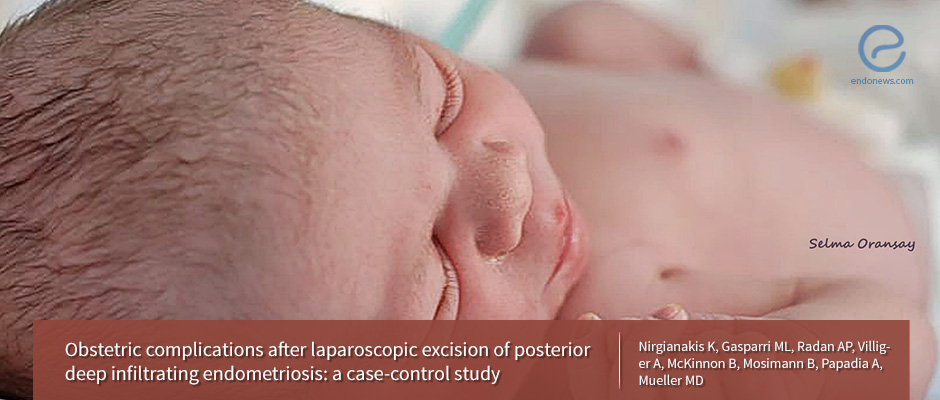The vaginal delivery rate of singleton term pregnancies still remains the same after total deep infiltrating endometrosis excisions
Aug 30, 2018
Complete excision of deep infiltrating endometriosis does not prevent the risk of placenta previa.
Key Points
Highlights:
- The women with excised deep infiltrating endometriosis have a significantly increased risk of placenta previa, gestational hypertension, and IUGR, compared to women without endometriosis.
- The preterm birth risk was not high and the possibility of successful vaginal birth is similar to those women without endometriosis.
What's done here:
- Pregnancy outcomes and delivery ways are studied in laparoscopically operated DIE patients resulting in 62 singleton pregnancies and compared to a matched control group without endometriosis (186 pregnancies).
-
While evaluating the results, the parameters of endometriosis such as the type of bowel surgery, endometriosis stage, level of bowel anastomosis, resection of the posterior vaginal fornix, affected structures by endometriosis, concomitant bladder wall resection were taken into the account.
İmportance:
- This is the first controlled study to assess the pregnancy complications and delivery outcomes who have previously undergone complete laparoscopic excision of DIE.
Key results:
- The patients with DIE with a previous laparoscopic total excision of endometriosis showed higher risk of placenta previa, gestational hypertension and intrauterine growth retardation (IUGR) when compared to the control group.
- Vaginal delivery percentages of the patients with DIE are surprisingly the same when compared to the control group.
- Slightly higher postpartum blood loss observed in operated DIE group, depending on previous partial resection of the vaginal posterior fornix but this was not statistically significant
Limitations:
- Many patients who underwent complete excision of DIE in initial case group are not presented in the main case group because of some reasons like lost of following or refused to participate.
Lay Summary
This recently published report in the Journal of Fertility Sterility is planned as a matched case-control study, by Nirgianakanis et al. from the University of Bern, Switzerland. Authors claimed their study is the first because previous studies on pregnancy outcome after laparoscopic surgery of deeply infiltrated endometriosis (DIE) have some failures.
Pregnancy outcomes and delivery risks are compared to the women without endometriosis, and the type of bowel surgery, endometriosis stage, level of bowel anastomosis when performed, partial resection of the posterior vaginal fornix, affected structures by endometriosis, concomitant bladder wall resection were taken into the account while evaluating the results.
The patients with DIE with a previous laparoscopic total excision of endometriosis showed higher risk of placenta previa, gestational hypertension, and IUGR when compared to the control group without endometriosis. In other words, the complete excision of posterior DIE did not prevent the risk of placenta previa often reported in women with endometriosis.
Possible c-section indications in case group are placenta previa, the level of bowel resection, intraabdominal hemorrhagia due to endometriosis, previous c-section, other placental anomalies. There are no multiple gestations in the study groups. However, the vaginal delivery rate in the case group was nearly the same to the control group (41.9 % in the case group and 56.5 % in the control group) and was statistically significant.
On the other hand blood loss during the postpartum period was slightly higher in the case group, though not statistically significant. Clinicians must be aware of the potential risk of placenta previa, IUGR, high blood pressure and preeclampsia during their pregnancy follow-up in previous posterior DIE patients with endometriosis.
"If the pregnancy is a singleton, C-section or vaginal delivery could be considered independently of the previous DIE surgery" concluded the authors.
Research Source: https://www.ncbi.nlm.nih.gov/pubmed/30098698
pregnancy outcome delivery outcome deeply infiltrating endometriosis ART IUGR vaginal delivery placenta previa gestational hypertension bowel anastomosis posterior vaginal fornix

